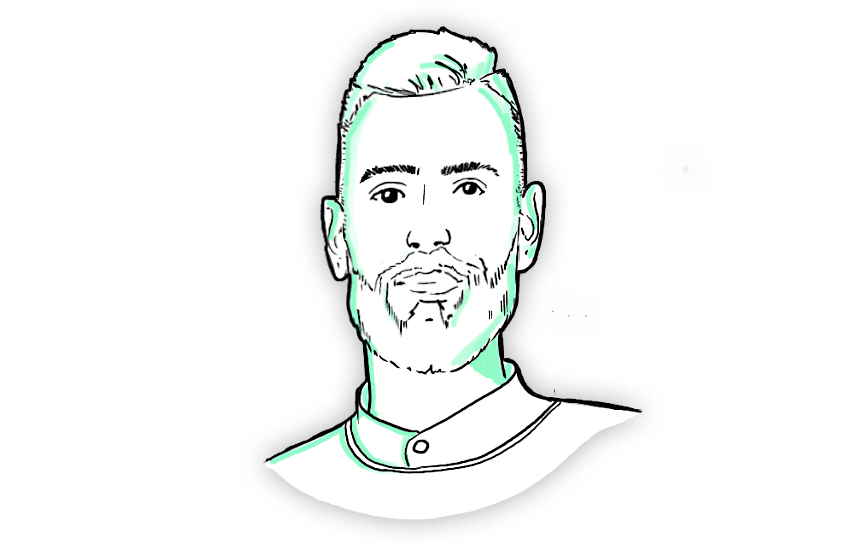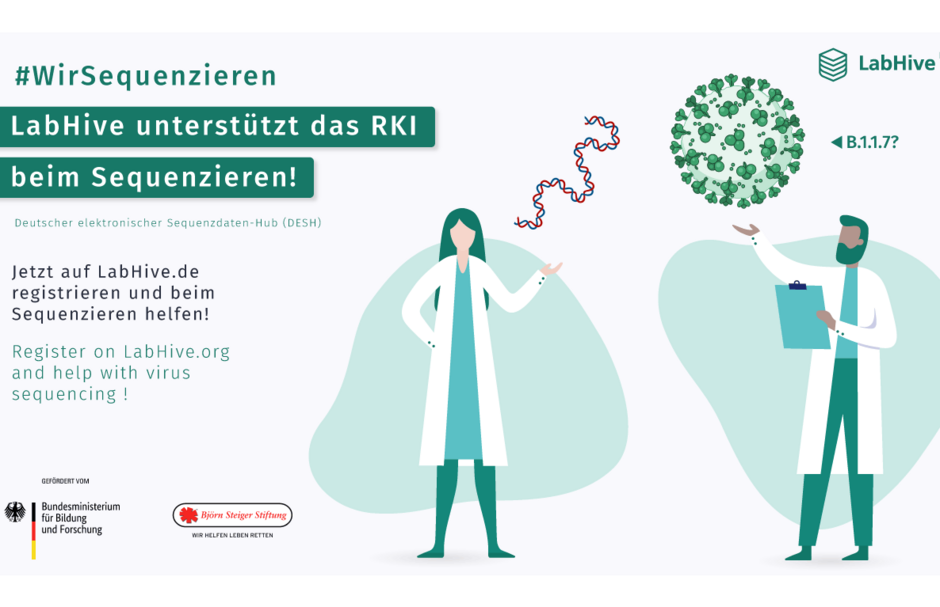Fighting the virus together with Lab Hive
Following the German government's call for digital and creative solutions for challenges in the Corona pandemic, HPI D-School alumnus Johannes Richers co-developed the diagnostic platform LabHive as part of an interdisciplinary team. The network combines the collection, pooling and placement of resources. This helps increasing testing capacities as one of the most important measures against the spread of Covid-19.
The need for new, digital strategies in public health becomes especially urgent in the context of the global pandemic. LabHive's mission is to implement these necessary innovation processes with the help of Design Thinking methods. In this interview, Johannes Richers and the Lab Hive team tell us more about their work within the motto "Spread the test, beat the virus!".
The innovation project LabHive has evolved from two independent projects within the #WirVsVirus Hackathon of the German government. What is the innovative approach behind LabHive and to what extent are Design Thinking strategies used in its development? What are the advantages of working in an interdisciplinary team from your point of view?
LabHive is about increasing SARS-CoV-2 testing capacity and making it usable. This is done by making resources visible and by connecting laboratories. For example: qualified personnel in the area, equipment, reagents, material, all these resources should be visible so that diagnostic laboratories can locate and retrieve resources from the curated database with a few clicks when needed. The second step can then be the marketing of excess capacity and load balancing. Public and private institutions with demand can see labs with free capacity and in the case of local hotspots tests can be better distributed: Tests thus arrive where they are needed.
Design Thinking plays a central role for us. We work as an interdisciplinary team in digital spaces with interactive methods and put users at the center of our development. Since day one, we have been in contact with people at different points of the value chain. The user perspective is crucial for us in the development but especially in the testing of digital prototypes.
The interdisciplinary composition of our team is an essential prerequisite. With LabHive, we operate in a field between diagnostics, politics and administration, public health actors and the population. In order to do justice to the complexity of this field of action, different perspectives and expertise are necessary. Our team includes people from the fields of science, medicine, design, software development and data protection. This is the only way we have insight into the structures of laboratories and can grasp the needs and assess what information is relevant.
At the same time, we need to figure out how best to build and design the platform and what elements are needed to provide a user-friendly design. Intuitively navigating the platform ultimately makes it efficient to use, and only then will the solution allow labs to actually reduce their workload. Last but not least, legal expertise is important, i.e. the secure handling of data. The interdisciplinary view makes it possible to look at the process from all sides and to keep an eye on what users need, hope for, and possibly fear from the very beginning.
Interdisciplinarity is also the basis for implementation and further development. Starting with understanding what is needed in diagnostics, how much time is available for resource search and allocation, who should and would like to be contacted by whom. To answer these questions, feedback is needed from all levels, from volunteers, from researchers from laboratories, from decision makers from diagnostic institutions and last but not least from policy and administration levels.
You are responding effectively to the latest developments in the pandemic and are now also supporting the Robert Koch Institute in virus sequencing. Why are the development of digital tools as well as collaborations and co-creation processes so crucial for public health innovation?
Speed is crucial in the pandemic. Often, there is only a narrow time window of a few days to keep the spread as small as possible. On the one hand, digital solutions allow data to be transmitted in real time, so mutual exchange can take place quickly to convey needs. And on the other hand, digital solutions can be further developed and adapted quickly. For example, sequencing: Samples need to get quickly and efficiently to laboratories that can sequence. So the question is: who has capacity, who can help, and what needs to be provided in the lab to link data? What are the new variants that need to be responded to? What is the dissemination scheme?
Analog tools are more difficult to coordinate and connect, the data flow is slow and thus current events can hardly be mapped. On the basis of this situation, important decisions are made that have a major impact on the players in the public health system and on society.
Lab Hive is a good example of the positive influence of open and social innovation. Why do you think social innovation projects are so important for society? How do you want to help shape it in the future, even beyond the pandemic?
Open social innovation is an expression of social participation, because a free and democratic state depends on the active participation of the population. Especially in the area of digital transformation and the question "How can innovation succeed here?" the open-social mode is trend-setting. This includes: The problem remains in the foreground, the work for and with each other, less the individual profit, but the joint development of solutions serves as the basis for action. This results in new perspectives and approaches that can be implemented more quickly.
Together with other projects from the hackathon, we have therefore joined forces to form the »Innovationsverbund Öffentliche Gesundheit«. Side by side with the Björn Steiger Foundation and together with the CIO Corporate Citizenship initiative, we want to demonstrate the impact of open social innovation. The fact that information is shared freely in the process is one of the traits that we hope will have an impact beyond the pandemic. Also regarding to LabHive: There can always be shortages in laboratorties, a network for the targeted joint distribution of resources remains in place.
Contact Johannes Richers on LinkedIn.
Photos: Dr. Johannes Richers, LabHive GbR
The interview was conducted by Anna Dotzek and Stefanie Schwerdtfeger.



